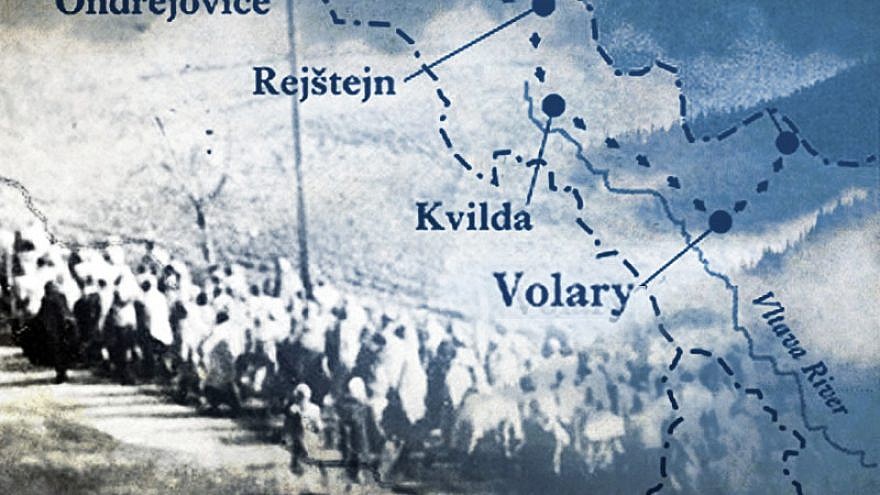To mark Women’s History Month, the Yad Vashem Holocaust memorial and museum in Jerusalem is featuring an online exhibit titled “The Death March to Volary,” depicting the fate of Jewish women forced on a death march in the winter of 1945.
Of the 1,000-plus prisoners sent on the march, some 350 survived.
Testimonies of survivors and U.S. Army veterans are included, as well as documentation from the trials of death-march commander Alois Dörr and his accomplices, shedding light on this little-known chapter of the Holocaust.
The exhibition—available in English, Hebrew, German and Spanish—is currently being featured on Yad Vashem’s website. It retraces the march utilizing interviews with surviving women, written testimony and historical pictures.
The march began on Jan. 24, 1945, when female Jewish prisoners were evacuated from the Schlesiersee (today Sława) concentration camp in Upper Silesia in western Poland, a region annexed to Germany. The women were forced to march on foot in a southwesterly direction, unaware of their destination, in freezing conditions.
It concluded 106 days and more than 800 kilometers later on May 5, 1945, in the town of Volary (German: Wallern) in Czechoslovakia, not far from the border with Germany and Austria. There, they were liberated by the U.S. Army.
The exhibit also features testimony of one of the liberating U.S. servicemen, Maj. Aaron S. Cahan, a Jewish medical officer who describes the condition of the survivors.
“My first glance at these individuals was one of extreme shock—not ever believing that a human being can be degraded, can be starved, can be so skinny and even live under such circumstances,” he recollected. “I was surprised and shocked when I asked one of these girls how old she was and she said 17, when to me she appeared to be no less than 50.”
Accompanied by some of the survivors, the Americans retraced the steps of the women as far as was possible to gather bodies of those who had died along the way. They buried 95 victims in a special cemetery that the residents of Volary have tended to this day.
For more information, visit Yad Vashem’s website.


























